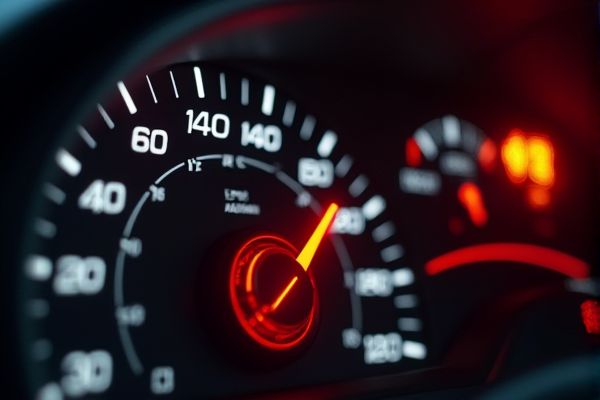
The Mercedes-Benz A-Class check engine light is a critical indicator that the vehicle's onboard diagnostics have detected a fault in the engine management system, which could stem from sensor anomalies, emissions irregularities, or fuel system errors. Prioritized troubleshooting using an OBD-II scanner to retrieve diagnostic trouble codes (DTCs) allows for precise, data-driven identification and resolution of issues, ensuring optimal performance and preventing further damage.
Mercedes-Benz A-class check engine light on meaning
Loose Gas Cap
A loose or missing gas cap can cause fuel vapors to escape, triggering the check engine light.
Oxygen Sensor
A faulty oxygen sensor can lead to incorrect fuel-to-air ratio readings, causing the check engine light to illuminate.
Catalytic Converter
Issues with the catalytic converter can lead to emissions problems and trigger the check engine light.
Mass Airflow Sensor
A dirty or malfunctioning mass airflow sensor can disrupt engine performance and cause the check engine light to come on.
Spark Plugs & Wires
Worn-out or faulty spark plugs and wires can cause engine misfires, leading to the check engine light.
Fuel and Air Metering Systems Problems
Issues in these systems can affect engine performance and trigger the check engine light.
Ignition System Faults
Problems with the ignition system can cause misfires and illuminate the check engine light.
Emissions Controls Issues
Faults in emissions control systems can lead to the check engine light coming on.
Transmission Issues
Problems with the transmission can trigger the check engine light, especially if they affect engine performance.
Old Battery
A weak or old battery can cause electrical system issues that may trigger the check engine light.
Computer Output Circuit Issues
Faults in computer output circuits can lead to incorrect signals and illuminate the check engine light.
Exhaust Gas Recirculation (EGR) Valve Issues
A clogged or faulty EGR valve can cause emissions problems and trigger the check engine light.
Vacuum System Malfunction
Leaks or malfunctions in the vacuum system can lead to engine performance issues and trigger the check engine light.
For car users
If your Mercedes-Benz A-Class's check engine light turns on, safely pull over and immediately inspect simple issues like a loose or faulty gas cap, ensuring it's secured tightly since this is a common trigger. Then, use an OBD-II scanner or visit a trusted mechanic as soon as possible to retrieve diagnostic codes and address any serious engine or emission concerns, prioritizing your safety and preventing further damage.
Ignoring the check engine light
Ignoring the check engine light on your Mercedes-Benz A-Class can lead to significant issues such as decreased fuel efficiency, degraded engine performance, and potential damage to critical systems like the catalytic converter and sensors, which may result in costly repairs if left unaddressed. Data shows that delaying diagnostics and maintenance increases the risk of cascading engine malfunctions and operational inefficiencies, further compromising both vehicle safety and long-term reliability.
How to reset?
Begin by connecting an OBD-II scanner to your Mercedes-Benz A-Class to retrieve and record fault codes, then clear them using the scanner's reset function or by disconnecting the battery for 15 minutes while ensuring all systems remain off. If the check engine light returns after a reset, promptly consult a certified mechanic or authorized service center to address any underlying engine or emissions issues that may be contributing to the fault.
A diagnostic scan for a Mercedes-Benz A-Class showing a check engine light typically costs between $80 and $150, while repair expenses can range from $150 up to $600 or more depending on the specific issue, such as sensor faults or emissions system malfunctions. Prioritizing cost efficiency, obtaining a professional diagnostic early is crucial to accurately target repairs and avoid unnecessary replacements, ensuring that maintenance decisions match the actual fault data.
Future prevention
Schedule regular maintenance per Mercedes-Benz guidelines--such as oil changes, air filter replacements, and sensor inspections at least every 10,000 miles or annually--to mitigate risks that trigger the A-Class's check engine light. Use an OBD-II scanner for early diagnostics and immediately address fault codes linked to emissions, fuel systems, or misfires to ensure optimal engine performance and prevent warning light activation.
